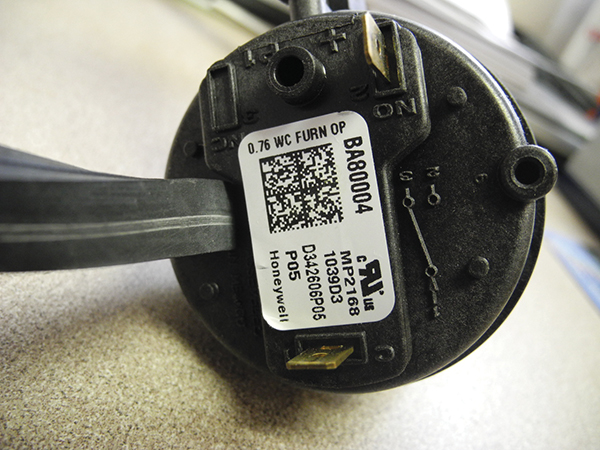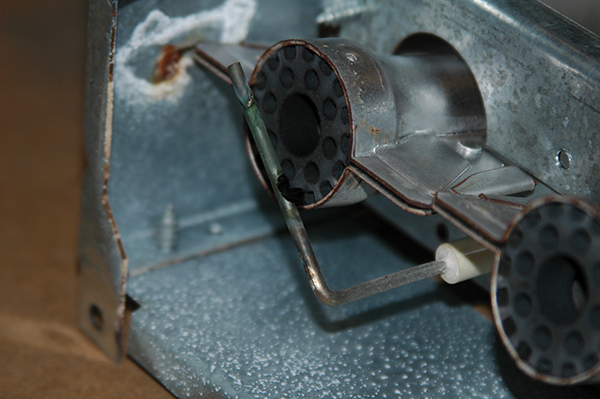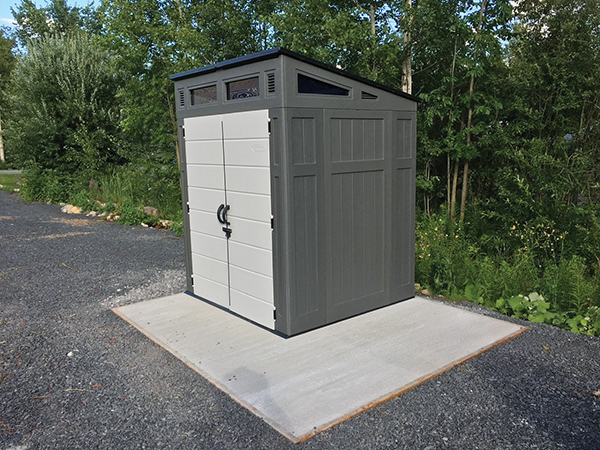
Social Media: Help or Hinderance
January 2, 2023 | By Ian Mcteer
The rise of ‘helpful’ do-it-yourselfers on YouTube is generating new troubleshooting challenges for HVAC service technicians.

Some homeowners, looking for ways to save money, have discovered it’s easy to purchase HVAC equipment such as thermostats, cooling systems, furnaces, air handlers, humidifiers, mini split cooling, and heat pumps and even repair parts from online sources.
Probably nothing annoys a legitimate contractor more than a homeowner calling and asking for a cheap price to install his rogue equipment. Or, and this happens far too often, after a botched attempt at do-it-yourself (DIY) installation, the perplexed homeowner calls a local contractor looking for a low-priced bail out.
Or maybe, after some time has passed with the online-purchased unit doing yeoman’s work, it finally breaks down only to have the befuddled technician utter those famous words: “What have we got here?”
Technicians often mention service calls made by perplexed homeowners after attempting to install a smart thermostat bought from the local big box store. After botching the wiring and taking out a low voltage fuse, or even a control board, it proves that such expensive excursions into the DIY world simply don’t pay off.
My free-market instincts compel me to believe that people should be able to buy and install whatever they want, however, my technical background has convinced me that the uninitiated working with electricity, pressure vessels and dangerous hydrocarbons are on a fool’s errand.
All of us, I’m sure, have tried our hand at tasks likely just out of our skillset range but seemingly not a mountain too high. Whether it’s trying out a new recipe, building a shed, or rebuilding an engine, to mention just a few, most DIYers are capable of producing an acceptable finished result that’s worthy of some boasting.
In my case, I wanted to have an 80 sq. ft. concrete pad installed for my machine shed that included a landing pad for my lawn tractor and maintenance area. Having never worked with that much concrete before, I found a helpful concrete calculator on the internet (yikes, 54 30-kg bags required), and fortunately I found a ready-mix company willing to deliver small quantities.
After watching more than a dozen YouTube videos on how to prepare the form, screed the concrete and prepare the non-slip surface (plus a bit of help from some locals), I got my glorious concrete pad installed. And thank you to everyone on social media who gave me such great advice.
What could go wrong?
Back in the pre-energy crisis days I met more than a few homeowners who happily maintained their own furnaces. They knew how to clean a pilot, could replace a thermocouple, diligently washed horsehair air filters, adjusted the fan belt and oiled (often over-oiled) the shaded pole belt drive fan motor.
Pre-Internet, one source of information about heating systems was the local library, yet according to my dear departed mother-in-law, a life-long librarian, she could not remember directing even one anxious homeowner to the library stacks in search of knowledge related to coaxing a reluctant gas furnace back into heating action. It seems they never broke down during library hours.

A typical furnace user’s manual for homeowner troubleshooting.
It’s not as if our country hasn’t been through financial crises before, there have been several recessions in my lifetime alone. A bit of a perfect storm really, because the first thing that often happens in households facing monetary shortcomings is any sort of maintenance goes by the wayside, be it automotive, general house maintenance and especially mechanical system upkeep.
The complexity of modern heating systems and a lack of well-trained technicians to care for all the furnaces, boilers and heat pumps out there frustrates end-users waiting for help and then having to deal with large repair bills.
But, as those professionals doing mechanical maintenance every day often warn: “If you don’t schedule time for maintenance, your equipment will schedule it for you.”
As another winter arrives, heating systems across Canada are being switched on every day. And some are simply not going to answer the call, leading to the busiest time of the year for HVAC contractors, sales professionals, installers, and technicians. Be it ever thus, however, some equipment owners will try to coax their equipment back into life on their own with varying degrees of success.
When the heat doesn’t work, some shivering homeowners will try several methods to get the heat going again: call a friend, neighbour or relative for advice or, in today’s world, visit social media websites.
Largely ignored are the instructions provided by the equipment manufacturer in the owner’s manual. Figure 1 is typical instruction found in most manuals. Notice the manufacturer suggests checking the air filter, adjusting the thermostat to call for heat, cycling the power supply, and importantly, checking the vent terminals for blockage.
That’s it, otherwise, call for service.
The instructions do not advise the customer to remove panels and jump out switches or to monkey with control boards and other components. Social media, however, contains no end of videos showing all sorts of troubleshooting advice, and too much of said information ranges from irrelevant to downright dangerous.
The perils of YouTube
As research I watched several social media videos and some do give good advice to HVAC neophyte homeowners. Thus, following is my Social Media Top Nine Things to Check Before Calling for Service:
- Check, clean or replace the furnace filter.
- Make sure the thermostat is calling for heat.
- Check the thermostat batteries if so equipped.
- Check the appliance power supply switch and circuit breaker.
- Try turning off furnace or boiler power supply for 30 seconds then restart.
- Be sure all the registers and return grilles are open and unobstructed.
- Visual inspection of a drain line, make sure it has not been pinched off by a heavy object.
- Check outdoors, be sure the vent terminals are unobstructed and clear of snow and ice.
- Snow and ice must be cleaned, carefully, away from the gas meter and pressure regulator vent
Still nothing – Check the pressure switch
While mostly good advice, it could be that many homeowners are unaware of the location of gas meter pressure regulators and vent terminals.
It could also be so snowy and icy that a trip outdoors to discover the location of a buried vent terminal and clean it out just isn’t going to happen.
If, for whatever reason, the regulator vent is blocked and the regulator loses its reference to atmosphere, it simply locks up: no more gas!
Furnace or condensing boiler flue pipe terminals buried in snow will cause pressure switches to do their job: prevent further combustion.
There are only three reasons why pressure switches (PS) on draft induced furnaces will trip a code:
- PS is closed at the start of the cycle
- PS doesn’t close at the start of the cycle
- PS opens during the cycle
There are a plethora of specific faults associated with any of these failure modes and only trained technicians can troubleshoot these problems.
Blocked vents or chimneys can easily be responsible for a PS failing to close or open during a cycle, yet some of the social media videos I watched had naïve homeowner’s poking around with pressure switches.
One content creator even illustrates how to jumper the switch out of the circuit, yikes!
If the vent is blocked, even one furnace cycle running with a bypassed pressure switch is one cycle too many.
Some creators suggest disconnecting the PS tubing (check if it’s clear, not unreasonable) then have the viewer suck or blow (gently) into the tubing until the switch can be heard to click, oh, it must be working now.
Except that a vacuum switch operating at a tiny fraction of air pressure can be destroyed by such a maneuver. A PS working at – 0.76-in. w.c. for example, (Figure 2) will rupture with one strong puff from the human source of pressure (remember: one PSI = 28-in. w.c.).

Figure 2. Example of a pressure switch: 0.76 in. w.c.
Social media videos, at least the ones I have been watching, make no mention of the necessity to keep the area around the terminal completely unobstructed. In Figure 3, the terminal has plenty of ground clearance, but the nearby material will cause flue gas to be deflected back and recirculated into the air intake pipe.

Figure 3. Vent terminal with little clearance risks having flue gas deflected back into the air intake.
Corrosive vapour in the intake air can contribute to burner corrosion, that, in turn, fouls the cross lighter and damages the flame sensor—cause and effect.
Well, if it isn’t the pressure switch, then it could be the flame sensor. That’s a reasonable conclusion, so go ahead and clean your flame sensor (Figure 4) and maybe that will solve the problem—it always seems to on social media.

Figure 4. A common suggestion on YouTube is to clean the flame sensor.
How frustrating for the homeowner to discover that a clean flame rod still doesn’t jolt the reluctant furnace back into service. All it takes is a few seasons of lapsed maintenance and a tiny bit of dirt lodged in the cross lighter to prevent a combustion cycle. Removing the burner train and cleaning the cross lighters is not generally a topic for the content creators I’ve been watching.
It is not uncommon for people to look for a quick fix. I’m sure all of us have done so at one time or another depending upon the circumstances. But a quick fix is not a long-term solution.
Proving our worth
As I said, I do not blame homeowners for attempting to repair their own HVAC equipment, and some do manage to get the heat restored. I do wish that handy DIYers would refrain from happily producing videos detailing their HVAC adventures. When these people do finally call on professional help, it’s in our interest to let them know the danger and share our knowledge and gain their trust.
Among the thousands of non-professional HVAC troubleshooting videos observed, here are my most memorable:
A man correctly diagnosed a furnace control board failure and replaced it with one he bought from an online retailer, yet his furnace was filthy, and the obvious lack of maintenance likely means another no heat situation in the future.
Another man replaced his hot surface igniter, then the flame rod, then the control board on an elderly mid-efficient furnace while making misleading comments (out of ignorance) about how the draft inducer works. He did get the unit working again, but seemed casually unconcerned about unnecessarily replacing parts that were in good working order.
Someone posing as an HVAC technician correctly diagnosed a control board failure. He managed to get a replacement part, but it came in a kit form and included a new hot surface ignitor. Thinking the new ignitor was “extra”, he replaced a board that now powered the existing ignitor with more voltage than it could tolerate. The video of him returning to install the ignitor he pocketed was not shown.
The comment sections are always interesting. Other than numerous complaints about slow service, high prices, and sales pitches like “You need a new furnace,” (which we truly do hear too often) this one caught my attention: “I was called at three o’clock in the morning on Christmas Eve to fix a boiler, and again on Christmas Day to do a forced hot air furnace and I’m not even a furnace technician…I’m just “Blessed” with the ability to fix things.”
Undoubtedly, repairs (or necessary replacement) will cost more than anticipated by the DIYer especially when erroneously replaced parts need to be replaced by exact replacements.
For as much as my DIY concrete job saved me loads of money (Figure 5) and I’m thankful for exceptionally good advice from social media, it would be better if HVAC appliance services could be left to the professionals. And as professionals we must earn the trust and understand that we are in a technical service business that requires our expertise and customer service.

Figure 5. Backyard DIY projects can work, but leave HVAC to the professionals.
Ian McTeer is an HVAC consultant with over 35 years of experience in the industry. He was most recently a field rep for Trane Canada DSO. McTeer is a refrigeration mechanic and Class 1 Gas technician. Have comments, Ian can be reached at imcteer@outlook.com.




